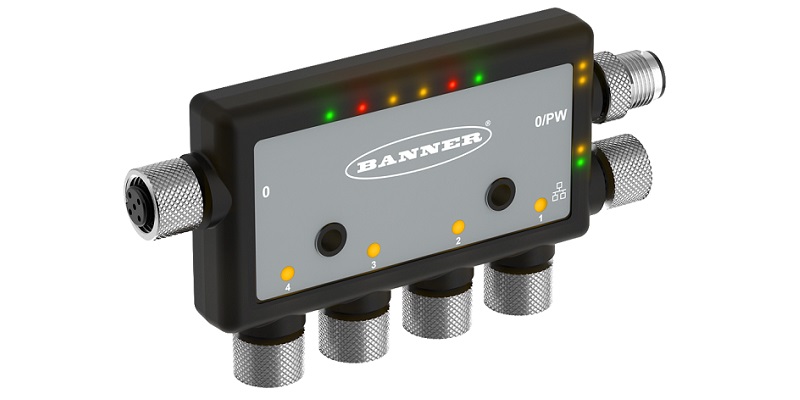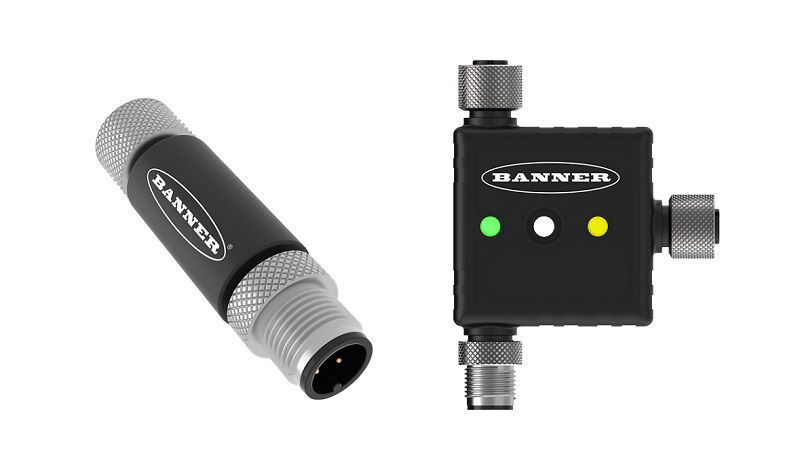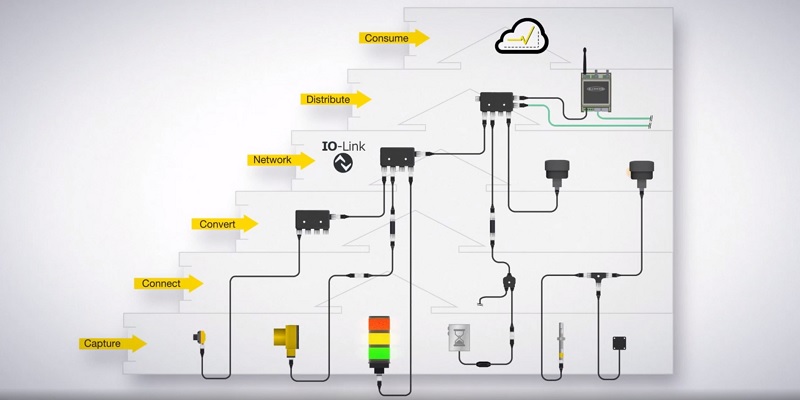Banner Engineering’s Snap Signal System for Easy IIoT Development
The Snap Signal System by Banner Engineering brings industrial IoT to all devices, including sensors and actuators - regardless of age or origin.
Banner Engineering’s Snap Signal System is designed to integrate existing system hardware into Industrial Internet of Things (IIoT) infrastructure. The Snap Signal System is a series of connectors and controllers that can perform the cabling, data conversion, storage, and transmission required for modern industrial automation.
Applications
Suppose a factory has a machine cluster that has been performing reliably. However, the engineering team would like to predict when tools should be changed, and would like to collect more data on this cluster and process it remotely. Rather than retooling the entire machine cluster, the Snap Signal System can be implemented to send some of the existing signals from sensors to a controller that will make the data available on the cloud.
Ease of Installation
According to Banner Engineering, existing equipment systems can be retrofitted to report data to the cloud. To upgrade a manufacturing system for use in IIoT:
- Identify the data sources that need to be monitored. This means all electronic sensors that would be valuable for process control purposes. Consider temperature sensors, pressure sensors, position sensors, flow meters, light curtains, and so on.
- If there are additional sensors that would be useful, they should be added at this time.
- Use the system diagram shown below (and advice from Banner Engineering engineers) to determine which cables, connectors, splitters, and so on are required.
- Decide whether the system will be connected to a wired communication bus or wireless connections.
- Set up or prepare the cloud storage service. Banner Engineering offers these services as well, if the facility does not already have a cloud service provider.
- Place the data splitters. The splitters are set up to allow data transmission to existing systems, but then also send data to the converters and controllers.
- Install the controller and connect the appropriate cables between the converters, splitters, and other data sources
- Connect the controller to the cloud service.
Snap Signal system diagram by Banner Engineering.
But How is This Possible?
Banner Engineering offers several modules that allow legacy devices to be linked to the IIoT. First, their controllers such as the DXMR90, transmit all datasets using a unified communication protocol. This allows data from multiple sources to be used in control loops and data archival purposes. Instead of relying on a technician to wander around the plant and collect diagnostic data, this controller transmits it for storage, making troubleshooting a low-performing machine much simpler.

Banner Engineering’s DXMR90 controller transmits a unified protocol from multiple sources simultaneously. Image used courtesy of Banner Engineering
At the heart of the Snap Signal System are the data converters. These converters act as translators, taking data from different sources which may use different protocols and unifying them into a standard protocol. Data can come from Modbus RTU, IO-Link, and other common protocols. This is particularly useful for systems that have been ad-hoc updated throughout the years, perhaps using different manufacturers for different components.
‘But what if my process consists only of discrete and analog I/O devices’ you may ask? These data converters can translate such raw I/O signals for integration with the controller, they are not reserved for device-level network protocols alone.

Converters allow data from different protocols to become unified. Image used courtesy of Banner Engineering
Final Thoughts
Ready or not, here it comes- IIoT is only growing in popularity and utility in the manufacturing plant. To remain competitive, plant managers will need to find places where they can automate repetitive, boring, dangerous, or precise tasks to improve their yield and their throughput.
What the Snap Signal System does is lower the barrier to entry into IIoT, allowing legacy systems to interface with cloud storage and remote monitoring and operation. Only minor retrofitting is required, saving both time and money. It’s a good way to get started in IIoT without having to completely retool a manufacturing plant.

 Facebook
Facebook Google
Google GitHub
GitHub Linkedin
Linkedin









